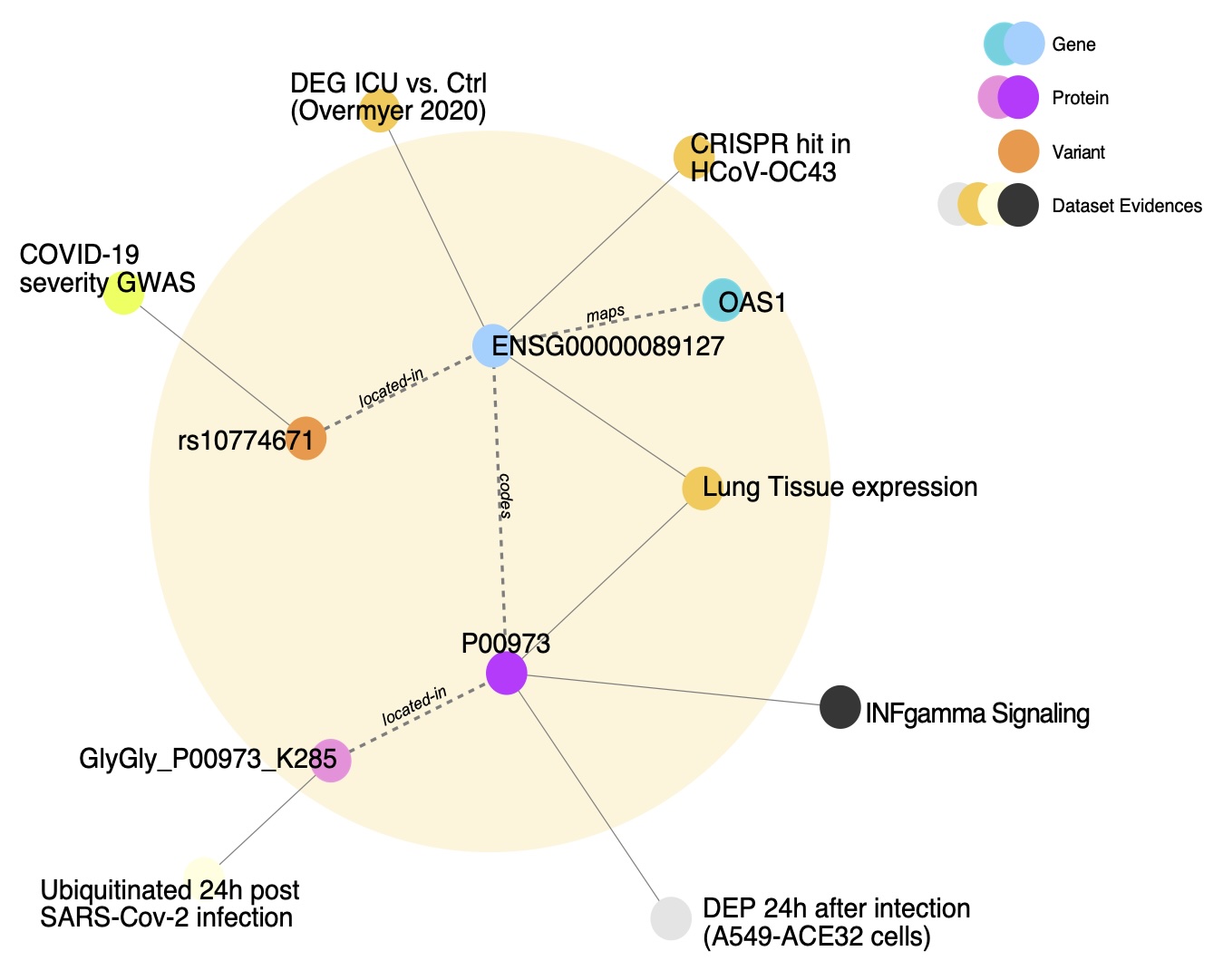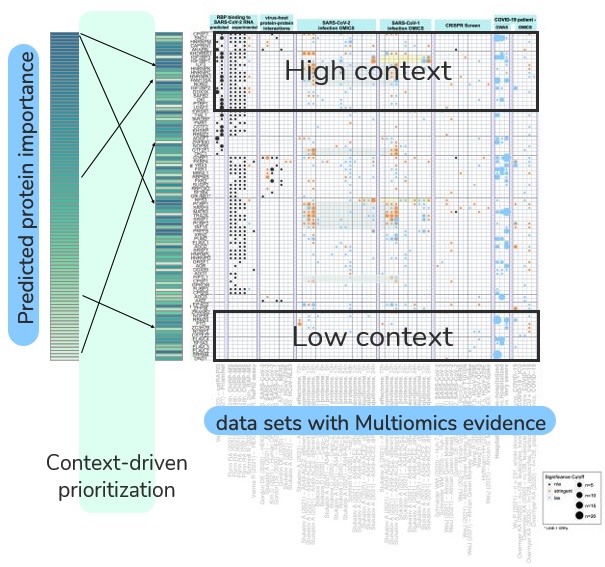Unraveling Biological Complexity with Knowledge Graphs
In the post-genomic era, life sciences have been transformed by high-throughput methods such as next-generation sequencing (NGS) and mass spectrometry (MS). These technologies are flooding the field with data, moving us from a hypothesis-driven to a data-guided paradigm in research.
The central dogma of molecular biology, which describes the flow of genetic information from deoxyribonucleic acid (DNA) to ribonucleic acid (RNA) to proteins, only scratches the surface of biological complexity.
With current Omics technologies, millions of snapshots of this complexity become available, which gives us the opportunity to better understand the true biology. Today we know that we need to integrate data the variety of Omics levels to grasp the intricacies of life.
From data to insights: the Imperative of Data Integration
Imagine being on safari, camera in hand, focusing on a giraffe eating from a tree oblivious to the fact that a lion is hunting nearby. This tunnel vision reflects the limitation of examining a single Omics level, potentially missing crucial biological events that could lead to faulty conclusions. Integrating multiple Omics level - the Multiomics – is like having a 360-degree view of the safari, ensuring that no detail is missed. By using data from genomics, transcriptomics, proteomics, and other Omics, we gain a holistic understanding of complex biological processes and diseases.

In the world of biological research and pharmaceutical development, the journey from raw data to insightful, integrated datasets is both a challenge and a necessity. This process, known as data integration, involves combining data from diverse sources and formats to provide a cohesive, comprehensive view of the research question at hand. One of the ways is the semantic integration, wich captures data combinations based on its meaning and context.
Knowledge Graphs: Navigating the Biological Data Maze
Knowledge graphs are a powerful tool for the integration of Multiomics data, by bringing together diverse datasets from areas like genomics, proteomics and metabolomics into a single, coherent network. The thereby linked biological effects on health and disease making complex biological interactions more understandable.

The integration goes beyond simply merging data and improves discoverability and uncovering hidden patterns through standardized vocabularies or ontologies that ensure data from various sources are interpretable and comparable. This capability supports complex queries and enables researchers to find comprehensive answers to questions about genetic variants and disease conditions. Furthermore, the dynamic and scalable nature of knowledge graphs allows the continuous addition of new data, making them indispensable in the rapidly evolving field of Multiomics.
Through knowledge graphs, the integration of Multiomics data becomes not just a technical task, but a gateway to unlocking the secrets of life, supplying unprecedented opportunities for discovery and innovation in biomedical research.
The Transformative Role of knowing01’s Technology
At knowing01, our knowledge graph-based software solution is at the forefront of innovation, designed for adaptability and deep contextual understanding. Coupled to our know.bot technology, we transform the challenge of diverse data types into an opportunity for comprehensive exploration and interpretation.
Whether you are exploring the genetic underpinnings of a disease, finding potential biomarkers, or searching for therapeutic targets, our technology ensures that no stone is left unturned.

The flexibility of our platform was previously shown in a use case involving RNA-binding proteins in COVID-19. By integrating different Omics datasets, our software outlines the potential therapeutic targets that were previously obscured by the complexity and scale of the data.
This is just one example of how our technology can illuminate the path from data to discovery. Read more in our recipes for success.
A Future Powered by Integration and Innovation
knowing01 is not just about supplying a tool; we offer a new paradigm for handling biological data. Our technology is a partner in discovery, enabling researchers to tackle the challenges of modern biology with the depth, breadth and flexibility they need.
Got your interest?
Let’s find out how we can enhance your research! Book a meeting with us or use the contact form below.